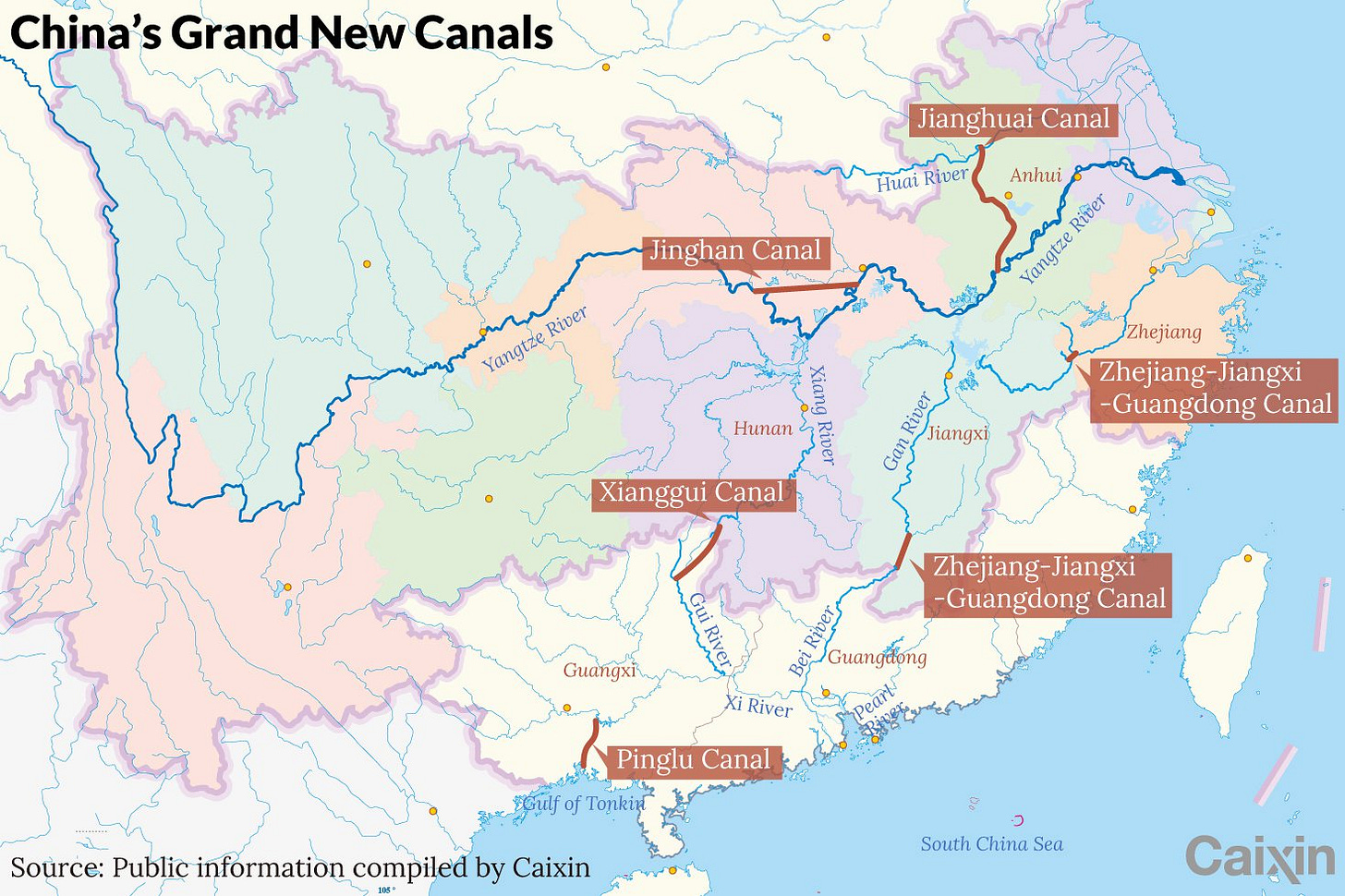In Depth: Canal Fever Grips China Amid Slowing Growth
Transporting goods on inland waterways is cheaper and more environmentally friendly than using roads or railways, but provinces are at risk of throwing money at projects that won’t pay off
China is in the grip of canal fever.
As the government steps up its long-term strategy to turn the country’s inland waterways into a network of interconnected arteries that will boost trade and economic growth, at least five major canal projects costing hundreds of billions of yuan are either being built or planned by provincial governments.
They include the 135-kilometer Pinglu Canal in Southwest China, the first manmade waterway connecting a river to the sea to be built since the founding of the People’s Republic of China in 1949, the 1,988 km Zhejiang-Jiangxi-Guangdong (Zhe-Gan-Yue) north-south canal system — which will be even longer than the Beijing-Hangzhou Grand Canal built 2,000 years ago — and an ambitious project led by the Henan provincial government that reportedly involves connecting waterways between the Yellow River, Huai River, and Yangtze River and provide direct access to the Yangtze River Delta.
Preparatory work on a major section of the Zhe-Gan-Yue canal, which will link the eastern provinces of Zhejiang and Jiangxi with the southern export powerhouse Guangdong, is pushing ahead. In mid-October, China Design Group Co. Ltd., a Shanghai-listed engineering design firm, announced that it had won a bid to conduct a pre-feasibility study for that section of the waterway, a project the Jiangxi provincial government dubbed the “project of the century” when it was announced in January 2021.
Keep reading with a 7-day free trial
Subscribe to Caixin Global China Watch to keep reading this post and get 7 days of free access to the full post archives.




